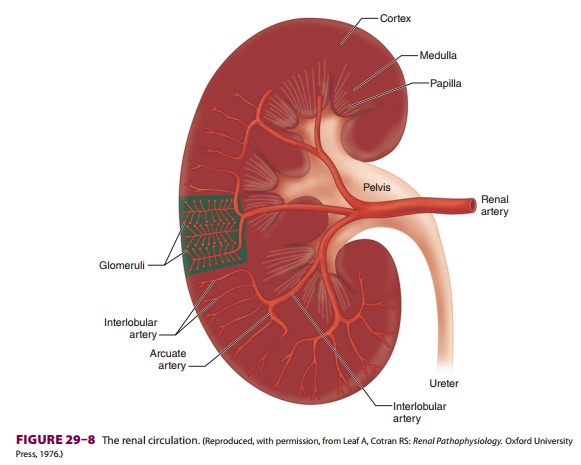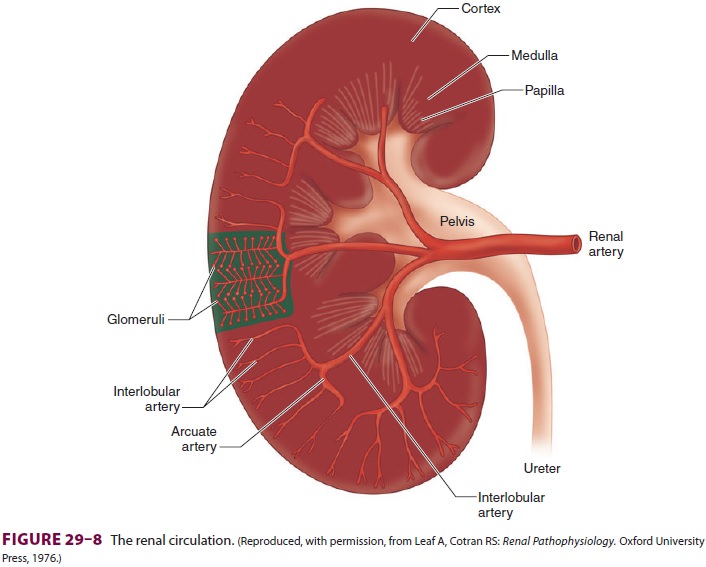Chapter: Clinical Anesthesiology: Anesthetic Management: Renal Physiology & Anesthesia
Anesthesia: The Renal Circulation

The Renal Circulation
Renal function is intimately related to renal blood flow (RBF).
In fact, the kidneys are the only organs for which oxygen consumption is
determined by blood flow; the
reverse is true in other organs. The combined blood flow through both kid-neys
normally accounts for 20–25% of total cardiac output. Approximately 80% of RBF
normally goes to cortical nephrons, and only 10–15% goes to juxta-medullary
nephrons. The renal cortex extracts rela-tively little oxygen, having an oxygen
tension of about 50 mm Hg, because of the relatively high blood flow with a
mostly filtration function. In con-trast, the renal medulla maintains high
metabolic activity because of solute reabsorption and requires low blood flow
to maintain high osmotic gradients. The medulla has an oxygen tension of only
about 15 mm Hg and is relatively vulnerable to ischemia.
Redistribution of RBF away from cortical
neph-rons with short loops of Henle to larger juxtamedul-lary nephrons with
long loops occurs under certain conditions. Sympathetic stimulation, increased
levels of catecholamines and angiotensin II, and heart failure can cause
redistribution of RBF to the medulla and is associated with sodium retention.

In most individuals, each kidney is supplied by a single renal
artery arising from the aorta.The renal artery then divides at the renal pelvis
into interlobar arteries, which in turn give rise to arcuate arteries at the
junction between the renal cortex and medulla ( Figure29–8). Arcuate arter-ies
further divide into interlobular branches that eventually supply each nephron
via a single affer-ent arteriole. Blood from each glomerular capillary tuft is
drained via a single efferent arteriole and then travels alongside adjacent
renal tubules in a second peritubular
system of capillaries. In contrast to the glomerular capillaries, which favor
filtration, peritubular capillaries are primarily “reabsorptive.” Venules
draining the second capillary plexus finally return blood to the inferior vena
cava via a single renal vein on each side.
Related Topics